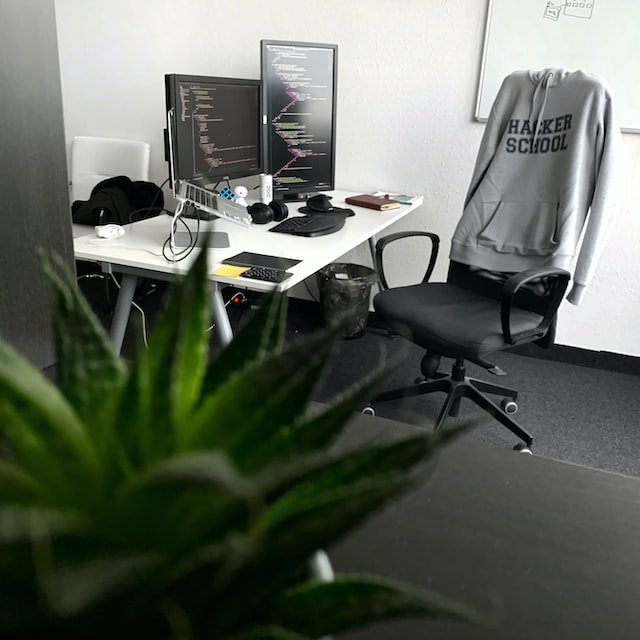How to Hire an Information Security Analyst
Hiring Guide for Information Security Analysts

Table of contents
Introduction
Hiring an Information Security Analyst is an important decision for any organization. The role requires a unique set of skills and knowledge, and finding the right candidate can be a challenge. This guide aims to provide a comprehensive overview of the hiring process for Information Security Analysts, including the key skills required, sourcing applicants, skills assessment, interviews, making an offer, and onboarding.
Why Hire
Hiring an Information Security Analyst is crucial for any organization that handles sensitive data. Information Security Analysts are responsible for maintaining the security of an organization's network and computer systems. They protect against hacking, data breaches, and other security threats that could compromise an organization's sensitive information. A skilled Information Security Analyst can help an organization to mitigate risks, reduce downtime, and protect its assets.
Understanding the Role
Before recruiting for an Information Security Analyst position, it's important to have a clear understanding of the role. Information Security Analysts should have a deep understanding of computer systems and networking, as well as knowledge of security threats and how to mitigate them. They should be able to analyze data and identify patterns that could indicate a security threat, as well as develop and implement security policies and procedures.
When creating a job description for an Information Security Analyst, it's important to be specific about the required skills and experience. This will help to attract candidates who are a good fit for the role.
Sourcing Applicants
To find the best candidates for an Information Security Analyst position, it's important to cast a wide net. One option is to post the job on job boards such as infosec-jobs.com, which is a specialized job board for information security professionals. This will ensure that the job is seen by a large number of qualified candidates.
Another option is to use social media to advertise the position. LinkedIn, in particular, is a great tool for reaching potential candidates. Additionally, networking events and industry conferences can be a great way to meet potential candidates and learn more about the industry.
Skills Assessment
Once applicants have been sourced, the next step is to assess their skills. An effective way to do this is through a skills assessment test. This can be done either online or in person, and should be designed to test the candidate's knowledge of computer systems, networking, and security threats.
Another option is to ask candidates to complete a sample project. This can be a real-world scenario or a hypothetical one, and should require the candidate to analyze data and identify potential security threats. This will give the hiring team a better idea of the candidate's analytical and problem-solving skills.
Interviews
Once a candidate has passed the skills assessment, the next step is to conduct interviews. This can be done through video conferencing or in person, depending on the location of the candidate.
During the interview, it's important to ask questions that assess the candidate's knowledge of computer systems and security threats. Additionally, questions should be asked to gauge the candidate's communication skills, since Information Security Analysts often work with other team members to develop and implement security policies and procedures.
Making an Offer
Once an ideal candidate has been identified, it's time to make an offer. This should be done promptly, to ensure that the candidate does not accept another offer in the meantime.
The offer should include the salary offered, as well as any other benefits offered by the organization. Additionally, the offer should include a start date and instructions for completing any required pre-employment tasks.
Onboarding
Once the candidate has accepted the offer, the next step is onboarding. This should include an introduction to the organization, its policies and procedures, and any training required for the position.
Additionally, the Information Security Analyst should be given access to any necessary systems and tools, and should be introduced to other team members. This will help to ensure a smooth transition and set the new hire up for success.
Conclusion
Hiring an Information Security Analyst is an important decision for any organization. By following the steps outlined in this guide, organizations can find the right candidate who has the necessary skills and knowledge to protect against security threats. Remember to use resources like infosec-jobs.com as a way to source candidates, and to be specific in the job description to attract the right people.
Sr. Cybersecurity Engineer, IAM(ForgeRock)
@ Visa | Austin, TX, United States
Full Time Senior-level / Expert USD 139K - 202KDomain Consultant 2 ( Network Security )
@ Palo Alto Networks | D.C. , Washington , United States
Full Time Senior-level / Expert USD 198K - 273KOperations Analyst Senior
@ General Dynamics Information Technology | USA GA Robins AFB - Robins AFB (GAC011), United States
Full Time Senior-level / Expert USD 76K - 103KElectronic Warfare Supervisor (EWS) Tactical Trainer at SCSTC Det Southwest-San Diego, CA
@ General Dynamics Information Technology | USA CA San Diego - SCSTC Det SW (CAC147), United States
Full Time Mid-level / Intermediate USD 68K - 92KDevSecOps Lead Software Engineer
@ Boeing | USA - El Segundo, CA, United States
Full Time Senior-level / Expert USD 130K - 177KNeed to hire talent fast? 🤔
If you're looking to hire qualified InfoSec / Cybersecurity professionals without much waiting for applicants, check out our Talent profile directory and reach out to the candidates you need!